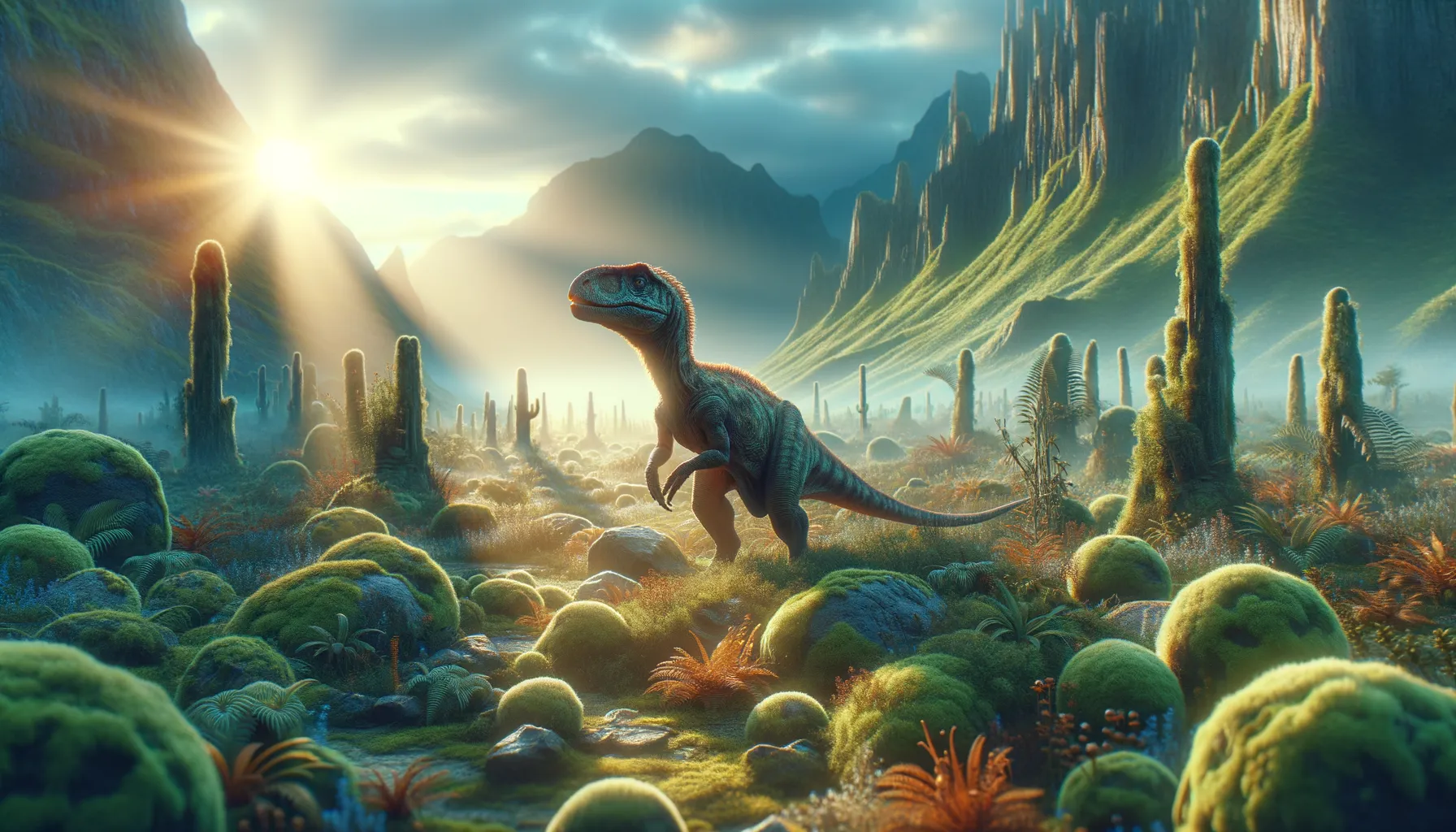
Microceratus
Small size, big role in ancient ecosystems.
Period
Cretaceous
Length
Measured approximately 2-3 feet long.
Height
Stood about 1-2 feet tall.
Weight
Ranged between 15 to 25 pounds.
Microceratus was a small herbivorous dinosaur known for its distinctive beak and small frills. It lived roughly 90 million years ago during the Cretaceous period. Despite its diminutive size, it played a vital role in the ecosystem as a herbivore. Its fossils, mainly found in Mongolia, provide valuable insights into the diversity of ceratopsian dinosaurs. As a basal ceratopsian, it helps scientists understand the evolution and adaptations of this intriguing dinosaur lineage.
Diet
Microceratus fed primarily on low-lying vegetation, using its beak to clip ferns and other greenery. Its diet likely consisted of a mix of leaves, angiosperms, and possibly seeds.
Hunting
Being a herbivore, Microceratus did not hunt other animals. Instead, it focused on grazing in groups to forage for food efficiently. Its feeding habits helped maintain the balance of plant life in its habitat.
Environmental challenges
Microceratus had to navigate a world with large predators, which made staying low and hidden essential. Fluctuating climates might have influenced the availability of food sources, requiring adaptability. Predation pressure likely forced these dinosaurs to evolve social structures for better protection. Seasonal changes could have impacted their feeding patterns, necessitating migratory or adaptive behavior.
Speed
Likely slow, with short bursts when needed.
Lifespan
Estimated to be around 10-15 years.
First discovery
Discovered in Mongolia by Walter Granger in 1923.
Fun Facts
- Microceratus was a small dinosaur, roughly the size of a turkey, making it one of the more petite members of the ceratopsian family.
- It lived during the Late Cretaceous period, approximately 90 million years ago.
- The name 'Microceratus' means 'small horned one,' referring to its tiny horns and frills compared to its larger relatives like Triceratops.
- Microceratus was a herbivore, meaning it fed on plants, and its beak-like mouth helped it snip off vegetation.
- Despite its small size, Microceratus was a speedy little dinosaur, likely able to dart away quickly from predators.
- Fossils of Microceratus have been found in what is now Mongolia, providing insight into the diverse ecosystems of that region during its time.
- Its discovery has helped paleontologists understand more about the evolution and diversity of ceratopsian dinosaurs.
Growth and Development
Hatchlings were likely dependent on their parents for protection initially. As they grew, they developed stronger limbs and the characteristic beak. Growth rates might have been influenced by environmental factors such as resource availability and climate. Reaching full size relatively quickly was crucial for their survival amid larger predators.
Habitat
Microceratus lived in diverse environments possibly ranging from forests to open plains. Their habitats were rich in plants, providing ample food sources. Sheltering in forests might have offered protection from predators. These environments were influenced by shifts in climate and vegetation over time.
Interaction with other species
Microceratus may have formed small herds, offering safety in numbers against predators. Interaction with other herbivorous species could have been competitive, focusing on similar food sources. Predatory dinosaurs likely posed a constant threat, shaping Microceratus's behavior. Coexistence required strategies to share habitats and resources effectively.
Natural lifespan
Microceratus likely lived around 10-15 years in the wild.
Reproduction
Like many dinosaurs, Microceratus probably laid eggs in nests. Parental care might have been minimal, focusing on nest protection. Clutch sizes were likely small, ensuring better survival for offspring. Reproductive success was crucial for the continuation of their species.
Social behaviour
Microceratus might have lived in small groups for protection. Such social structures could leverage group dynamics to avoid predators. Juveniles likely stayed with adults for guidance and safety. These social behaviors facilitated effective resource and space utilization.
Fossil locations
Fossils of Microceratus were primarily discovered in Mongolia, offering a glimpse into Asian ceratopsians. Excavations have focused on areas known for diverse dinosaur fauna. The presence in these locations provides evidence of the widespread nature of small ceratopsians. Fossil finds continue to offer insights into their adaptations and evolution.
